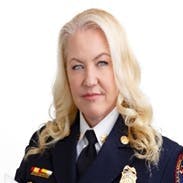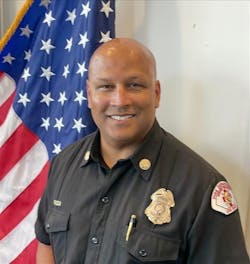CTEX 2024: Prioritizing Personnel Well-Being
Ethical Decision-Making in Organizations
by Dr. Kristen Wheldon
We use a specific strategy in decision-making that leads to favorable or unfavorable outcomes. As organizational leaders, it’s imperative to understand strategies and instill a strong ethical commitment to serving the community. Beyond simply espousing organizational values, this commitment requires taking a closer look at the morals, values and ethics that drive the decision-making in an organization.
By the application of ethical decision-making, we have the potential to improve psychological safety and to challenge cultural dynamics that have a negative effect on the fire department workforce. As we begin to identify the biases that we use to frame our perceptions, we can decide to behave intentionally rather than falling into unhelpful patterns.
Ethical decision-making requires us to possess cognitive flexibility to resolve internal conflicts that can arise between our individual morals and organizational ethics. It also requires us to recognize the potential for ethical dilemmas and to problem-solve complex situations for which we might need to prioritize one ethical standard over another.
We must explore the complexity of organizational culture to identify and develop opportunities to lead at each level of the organization. Furthermore, we must recognize psychological dynamics. By doing both of these things, we can improve health, safety and resiliency.
3 Take-Aways
- Psychologically safe work environments appeal to recruits and play an active role in retention efforts.
- Although we might use the words interchangeably, morals are based on individual perceptions of right and wrong, whereas ethics reflect a group consensus. A code of ethics gives us a foundation by which to base decision-making.
- Organizations that are rooted in ethical decision-making reflect opportunities for organizational trust and resilience.
Avoiding Collapse: The Phases of Structural Compromise in the Life of a Firefighter
by Heather Marques & Steven Slagle
As we all know, a building that’s under duress from a heavy fire load is susceptible to collapse. Inadequate ventilation, compromised structural integrity, past damage and construction materials contribute to the outcome. These processes—moving from incipient phase, to flashover, to free-burning and then decay—are similar to the life of a firefighter, from recruit to retiree. Compounded events that members experience at work and outside of it accumulate and saturate us, compromising our structural integrity as people to lead to our own “structural collapse.”
3 Take-Aways
- Firefighters face a challenge returning to their home life from the station. This challenge must be managed.
- Repeated exposure to the dark side of humanity can overwhelm our senses and change us, but we can take steps to manage the effects.
- By starting earlier in a career, firefighters can affect their long-term health and longevity via good sleep hygiene, nutrition, fitness and clear communication.
Leadership & Service: Why Firefighters Stay
by Jason Hosea & Greg Lloyd
Leadership is about change and managing it effectively. The dichotomy of this change involves holding onto some traditions while embracing new ones. There is no doubt that the landscape of the fire service is changing on many fronts. This landscape includes changes in effective leadership, strategic and innovative recruitment approaches, and understanding what members of the fire service at all levels need to thrive.
How do we build and maintain a high-performing organization where dynamic leadership, inclusivity and accountability intersect? How do we create workplace environments that ensure that members feel included and bring their best every shift? What strategic approaches can organizations take to recruit members who reflect the diversity of the community while ensuring that these people possess the skills that are required? How do we keep current members enthusiastic about service to the community, the organization and each other? Are we providing professional development opportunities, including effective mentorship and succession planning? If not, why?
3 Take-Aways
- Courageous and dynamic leadership is required to develop high-performing teams. Be prepared to have difficult conversations that hold people accountable. Conversely, uplift and celebrate those who rise to the occasion.
- Leaders must continually scan the organization’s environment. This includes the physical, social and emotional environments. If these environments aren’t in alignment with the core values of your organization, be a leader and change them.
- Understand that as the diverse needs of your community increases, so should the diversity of your workforce. Monetary rewards aren’t enough for modern day recruits. These people are looking for quality of life, purpose and inclusivity.


